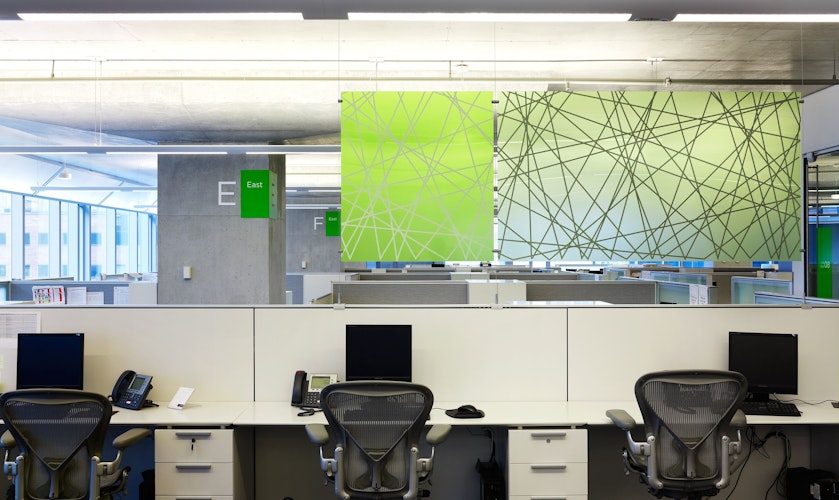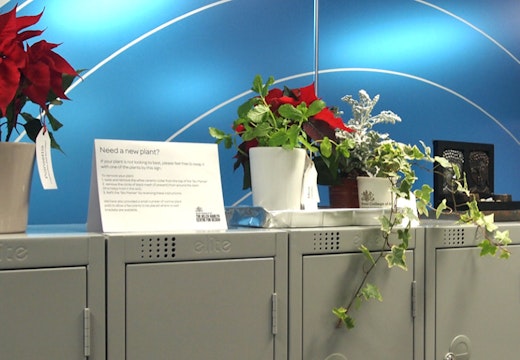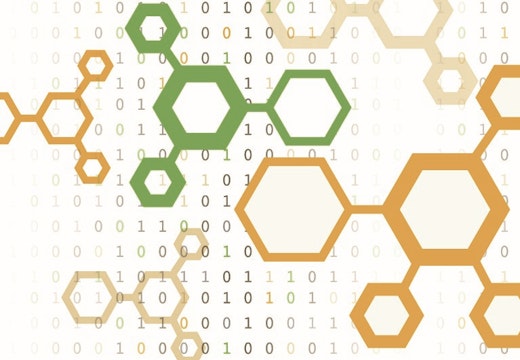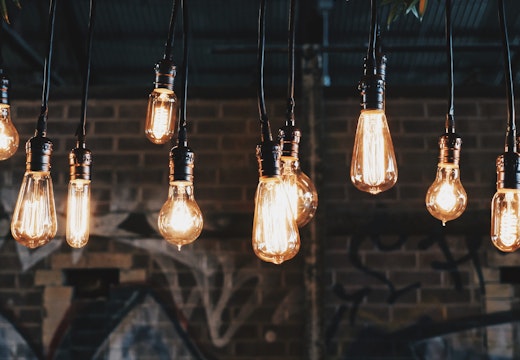Four ways environmental graphics can improve employee experience
From wayfinding and visual communications to improving creativity and mental focus, experiential graphic design can play a critical role in how we interact with our workplace
A brand is so much more than its offerings – and brand communications go well beyond a logo or advertisement. Brand communications are deeply embedded into everything a company engages with, including the workplace.
A great branded environment – one that uses graphic design to reflect and reinforce the company brand through the use of typography, colour, imagery, illustration and otherwise – is not only sensitive to the messages and stories of a company but also focuses on the entire experience of those that use the space.
Through graphic design, space is made to accommodate different people’s roles, functions and behaviour. Understanding how people move through and experience places is a key difference that distinguishes experiential graphic designers from the wider field of graphic design.
A multidisciplinary perspective
Experiential graphic design uses a multidisciplinary perspective including industrial design, interior design, copywriting, graphic design and architecture to look at an environment holistically and apply a more comprehensive approach.
In this post, we explore how experiential graphic design plays a crucial role in improving creativity, mental focus and wellbeing, so that along with contributing to brand experience, graphic design can create supportive environments for the people that actually use them.
By recognising the transformational power of graphic design in shaping how we think, feel and behave, we can design offices that are not only attuned to the values of the company, but that foster and support the needs of their occupants. Instead of thinking of offices as simply ‘boxes’ within which work occurs, we can transform them into supportive spaces allowing us to think clearly, be more innovative and work efficiently.
Letting creativity flourish
Creativity is in high demand within the workplace – these days it can define the success of a business. While cramped cubicles and blank walls stifle creativity, various aspects of the environment have been shown to foster innovative ideas.
Creativity naturally occurs when our minds are engaged but also distracted; when our minds are pulled in various directions and are forced to think outside the box. For example, people working in an environment with distracting background noise produced more novel ideas than those working in silence, and city names written in difficult-to-perceive fonts are described using more creative language.
Of course, it is possible to have too much of a good thing; too much distraction and stimulation harms creativity and cognition in general. Learning from such experiments, graphic design can be leveraged to provide appropriate levels of mental stimulation – allowing creativity to flourish while maintaining focus.
Creativity lives in that sweet-spot spot between blank walls and chaotic embellishment; a position occupied by thoughtful and informed graphic design.
Refuelling our minds
As we draft emails, write reports and chat during meetings, our mental resources are slowly drained and our ability to focus and to remain productive wanes as the day progresses. Various graphic design strategies allow us to regain some of these mental resources, boosting energy and productivity.

Graphic design can improve creativity and overall employee experience
Specifically, by taking inspiration from the natural world, we can transform environments into spaces that nurture our minds. For example, we know that simply taking a break from work and experiencing nature improves how we think and work. But such nature sabbaticals are not always an option, so graphic design can be applied within the workplace to achieve the same result.
By creating designs inspired by nature, we can bring the outdoors into our workspaces. Such economically sensible design strategies tap into powerful psychological effects resulting in both a more productive and satisfying workplace.
Space for one and for all
If nothing else, the well-documented failings of open offices have demonstrated that the workplace needs to provide us with clearly defined yet multifunctional spaces. While one space may serve as a cooperative work area, another needs to allow for focused, solitary work, and these functions may change throughout the day.
This is where graphics become relevant, outlining the functional distinctions and providing structure to the environment. Strategic placement of graphical panels, privacy screens or wall murals can signify certain areas as communal and highly energetic, and others as self-contained and internally focused.
Such design decisions allow employees to reclaim their privacy or foster collaboration when appropriate, improving overall employee satisfaction and productivity. Thus the function and the role of various office areas is clarified through effective graphic design – providing employees with a sense of freedom regarding where and how they choose to work.








